Few chocolate bars can claim the global recognition and enduring popularity of the KitKat. This iconic treat, famous for its crisp wafers enrobed in chocolate, has been a beloved snack for nearly nine decades. Originating in 1935 as Rowntree’s Chocolate Crisp in the United Kingdom, the KitKat has since conquered taste buds around the world with its delightful combination of textures and flavors. From its innovative design to its ever-expanding range of flavors, KitKat’s story is one of delicious ingenuity and continuous reinvention.
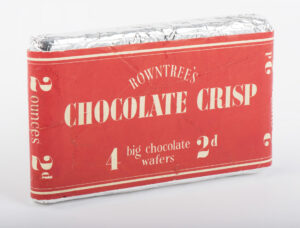
The brainchild of British confectionery company Rowntree’s, the KitKat was born from a desire to create a convenient and mess-free chocolate bar suitable for on-the-go consumption. The original four-finger design, inspired by a worker’s suggestion for a snack that could fit neatly in a lunchbox, proved to be a stroke of genius. The combination of crisp wafer layers and creamy milk chocolate offered a satisfying textural contrast and a delightful flavor profile that resonated with consumers. The success of the four-finger bar was quickly followed by the introduction of the two-finger version in 1936, further solidifying KitKat’s reputation as a perfect pick-me-up snack.
The name “KitKat” itself has a curious history. While the exact origin remains shrouded in some mystery, there’s evidence of the term “Kit Kat” or “Kit Cat” being used in the 18th century in reference to mutton pies served at London’s exclusive Kit-Cat Club. Rowntree’s trademarked the names “Kit Cat” and “Kit Kat” in 1911, though they weren’t initially used for the chocolate bar. It wasn’t until the 1930s that “Kit Kat” became associated with the now-famous wafer treat.
Following its successful launch in the UK, KitKat’s journey to global domination began. Nestlé, the Swiss multinational food and beverage giant, acquired Rowntree’s in the 1980s, giving KitKat a powerful platform for international expansion. The brand’s iconic “Have a break, have a Kit Kat” slogan, introduced in the 1950s, became a global marketing success, perfectly capturing the essence of the chocolate bar as a well-deserved treat during a busy day.
KitKat’s enduring popularity can be attributed to several factors. The chocolate bar’s convenient size and mess-free design make it ideal for on-the-go snacking. The combination of crispy wafers and creamy chocolate offers a satisfying textural and flavor experience. Nestlé’s commitment to innovation has resulted in a vast array of KitKat flavors, catering to diverse palates around the world. From classic milk chocolate to adventurous options like matcha and salted pretzel, there’s a KitKat flavor for everyone. Limited-edition flavors and collaborations with popular brands further fuel consumer interest and excitement.
Beyond its delicious taste, KitKat has become ingrained in popular culture. The distinctive red wrapper and the catchy jingle are instantly recognizable. The chocolate bar has been featured in movies and television shows, solidifying its place in our collective consciousness. In Japan, KitKat has reached a cult-like status, with an incredible variety of unique flavors and a strong association with good luck.
With its rich history, innovative spirit, and global appeal, KitKat remains a true confectionery icon. As the brand continues to evolve and adapt to changing consumer preferences, one thing is certain: KitKat will continue to be a beloved snack enjoyed by people of all ages around the world.
Target Market of KitKat
KitKat’s target audience is as wide as its reach. The brand purposefully avoids a narrow demographic, aiming instead for anyone who enjoys a sweet treat. This is reflected in their pricing strategy – KitKat sits comfortably below premium chocolate options, making it an accessible indulgence for a broad range of consumers. The “Have a Break, Have a KitKat” tagline further emphasizes this goal, positioning the chocolate bar as a welcome reward during a busy day, relatable to people of all ages and backgrounds.

KitKat’s marketing strategy reinforces this inclusive approach. Their advertisements utilize a variety of channels, from television and social media to traditional print media like newspapers and billboards. This ensures their message reaches a vast audience, encompassing those who spend time online as well as those who consume traditional media. The brand’s commitment to social responsibility, such as their goal of reaching 160,000 cocoa-farming families, further strengthens its appeal to a generation of consumers who value ethical practices alongside delicious taste.
With its broad target audience, mass appeal marketing, and commitment to affordability and social responsibility, KitKat continues to be a global chocolate favorite, enjoyed by people from all walks of life.
Marketing Strategies of KitKat
KitKat, a beloved chocolate-covered wafer bar, has employed various marketing strategies over the years to establish itself as an iconic brand in the confectionery industry. Here’s a detailed overview of some of its key marketing strategies:
1. Brand Positioning
KitKat has carved out a unique space in the chocolate bar market through its clever brand positioning. The brand uses the tagline “Have a Break, Have a Kit Kat” to position itself as the go-to indulgence for people of all ages who need a moment of respite during their day. This broad appeal is further emphasized by their description as “broad in appeal, young in feel, big in stature.” While the chocolate itself caters to a general love of chocolate, the messaging positions KitKat as more than just a sweet treat – it’s a well-deserved reward for making it through life’s busy moments.
This focus on breaks is further solidified by KitKat’s extensive marketing campaigns. For decades, the brand has associated itself with breaks across various contexts, from lunchtime pick-me-ups to post-workout refuelling, romantic woes, and even celebratory moments. This reinforces the idea that a KitKat isn’t just a chocolate bar – it’s a mental and physical break embodied in a delicious snack.
While KitKat doesn’t boast the strongest brand awareness compared to some competitors, its social media presence is noteworthy. With a million followers on Instagram and 24 million on Facebook, the brand leverages these platforms to connect with its audience. Their use of “moment marketing” allows them to interact with other brands and trends in real-time, keeping KitKat relevant and relatable in the ever-evolving social media landscape. These strategies solidify KitKat’s position as a familiar and comforting companion for people seeking a delicious and well-deserved break.
2. Product Innovation
KitKat’s commitment to innovation has been a key driver of its success. The brand consistently expands its offerings, ensuring something for every taste bud and catering to evolving consumer preferences. This is evident in the introduction of KitKat Chunky in 1999, a thicker version of the original bar that satisfied those seeking a more indulgent experience. Further innovation came in 2006 with KitKat Senses, a line featuring creamy fillings like mint and hazelnut, adding a delightful textural contrast and flavor dimension to the classic KitKat experience.
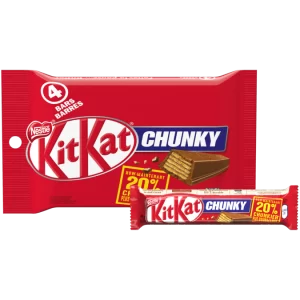
Beyond core product variations, KitKat explores flavor combinations. Launched in 2010, KitKat Duos offered bars featuring two types of chocolate, like milk and white chocolate or dark and mint chocolate. This catered to a desire for exciting flavor pairings, keeping the brand relevant and appealing to a curious consumer base. Similarly, KitKat Mini Breaks (2011) and KitKat Bites (2012) addressed the need for convenient, portion-controlled snacking options, perfect for on-the-go consumption.
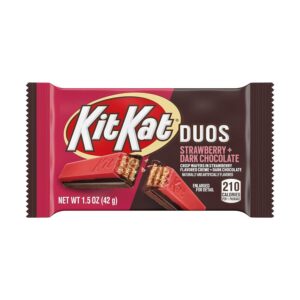
Innovation extends beyond just the chocolate itself. The 2014 introduction of KitKat Chocolatory showcased the brand’s willingness to experiment with premium ingredients, featuring flavors like ruby chocolate, matcha green tea, and salted caramel. This catered to a growing market interested in more sophisticated chocolate experiences. This spirit of innovation extends to KitKat’s commitment to sustainability, with their 2016 switch to 100% sustainably sourced cocoa and their 2018 campaign highlighting this focus. By constantly evolving its product line, packaging, and messaging, KitKat stays at the forefront of the chocolate bar market, ensuring its status as a beloved and ever-relevant treat.
3. Integrated Marketing Communications (IMC)
KitKat’s success can be partly attributed to its well-integrated marketing communication (IMC) strategy. This strategy revolves around reinforcing the brand’s core identity of being the perfect break-time companion and uses a variety of channels to deliver that message consistently. Television, radio, print advertisements, social media platforms, and even in-store promotions all work together to create a unified brand experience for consumers.
The cornerstone of this IMC strategy is the iconic “Have a Break, Have a Kit Kat” campaign, launched in the 1950s and still going strong today. These ads, known for their lighthearted humor and use of celebrities, perfectly capture the essence of the brand. By depicting people taking a well-deserved break with a KitKat, the campaign not only reinforces the brand identity but also encourages consumers to do the same. The long-running success and memorability of this campaign solidify its effectiveness as a core pillar of KitKat’s IMC strategy.
Beyond the central campaign, KitKat demonstrates its marketing agility through various additional IMC efforts. They promote new product launches like KitKat Chunky and KitKat Senses with targeted campaigns, ensuring these innovations reach their intended audience. The brand further demonstrates its awareness of current events by tailoring campaigns to coincide with major happenings like the Olympics or the World Cup. This flexibility and willingness to adapt their message to different contexts showcases a well-rounded IMC strategy that keeps KitKat relevant and engaging for consumers across all touchpoints. By seamlessly weaving together various communication channels with a consistent brand message, KitKat’s IMC strategy is a key factor in its global popularity and enduring success.
4. Social Media Engagement
KitKat understands the power of social media engagement in today’s digital landscape. Their social media strategy focuses on a three-pronged approach: fostering connections with consumers, strengthening brand identity, and keeping their audience informed about current activities, campaigns, and new product offerings.
Across major platforms like Facebook, Instagram, and Twitter, KitKat maintains an active presence. They leverage Facebook for extensive campaign rollouts, while employing “moment marketing” on all platforms. This tactic involves interacting with other brands in real-time, capitalizing on trending topics and fostering a sense of connection with their audience. For instance, collaborations with other popular snack brands demonstrate KitKat’s willingness to engage in playful banter and unexpected partnerships, keeping their social media presence dynamic and engaging.
The brand tailors its social media strategy to each platform. On Instagram, KitKat utilizes the platform’s visual focus to launch campaigns with fresh perspectives on their iconic tagline, “Have a Break, Have a KitKat.” One such campaign, “Celebrate the Breakers,” highlights the diverse ways people take breaks, resonating with a wider audience and showcasing KitKat as a companion for all types of breaks. This targeted approach ensures their message reaches the right audience on the right platform. The impressive follower counts – 1 million on Instagram and a staggering 25 million on Facebook – solidify the success of KitKat’s social media engagement strategy. By consistently using the word “break” across their posts and actively interacting with their followers, KitKat fosters a strong brand identity and a loyal online community.
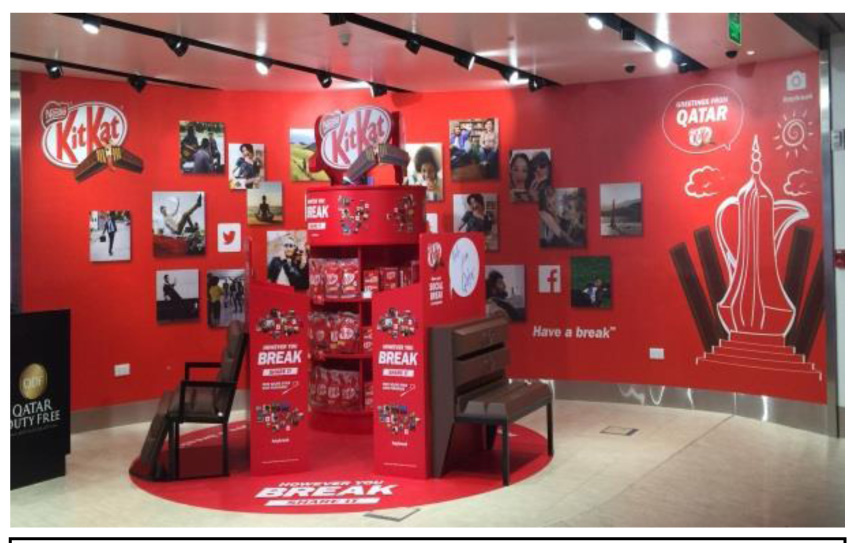
5. Partnerships and Collaborations
KitKat extends its reach beyond delicious treats through a variety of strategic partnerships. These collaborations not only expand brand awareness but also connect KitKat with diverse audiences and foster a sense of engagement. Let’s delve into some of KitKat’s key partnerships:
- Esports: Recognizing the growing popularity of esports, KitKat has established partnerships with leading organizations like Giants Gaming and Riot Games. The 2021 collaboration with Giants Gaming, continuing with GIANTX post-merger, focuses on content creation and campaigns within the Spanish market. Their role as the main partner for the EMEA LoL esports ecosystem until 2026 allows KitKat to connect with a vast audience of gamers across Europe, the Middle East, and Africa.
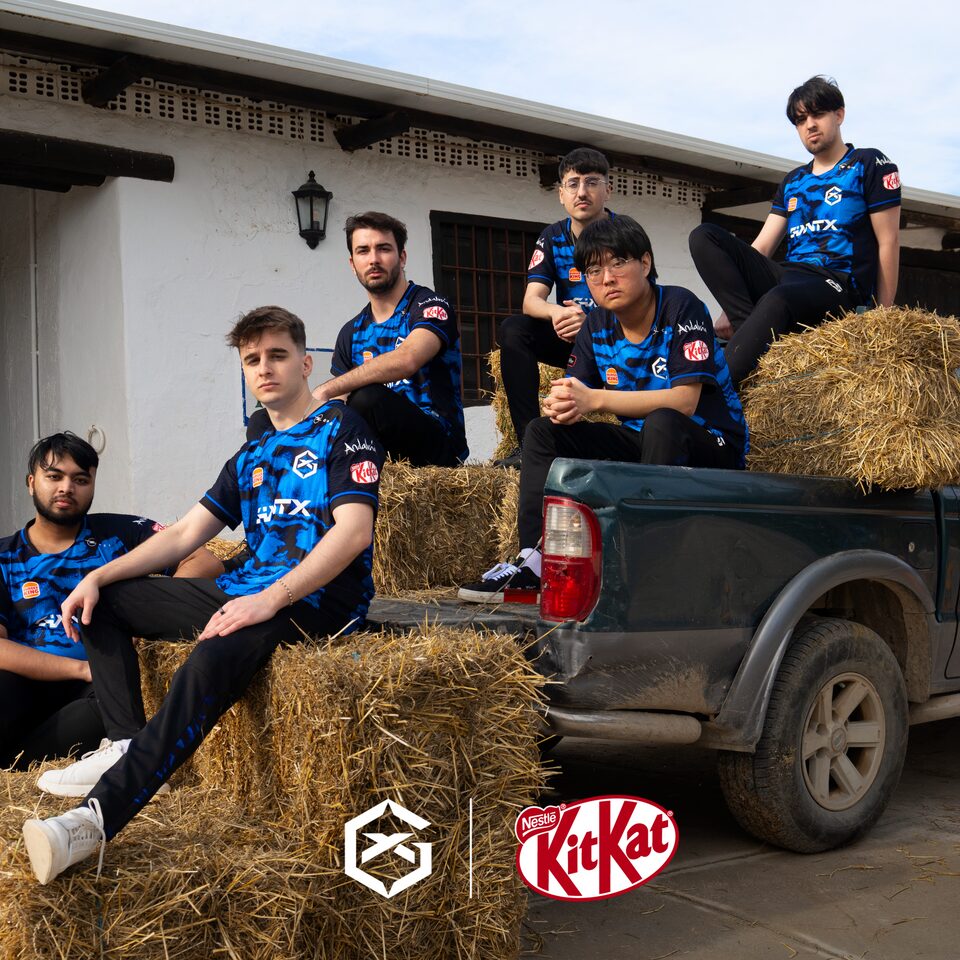
- Flavor Innovation: KitKat isn’t afraid to push boundaries when it comes to taste. Their 2022 collaboration with MILO, a popular malt beverage in Australia and Southeast Asia, resulted in a unique KitKat flavor featuring a MILO choc-malt fudge filling. This partnership catered to a specific regional audience and offered a new flavor experience.
- Community Support: KitKat demonstrates its commitment to social responsibility through partnerships like the one with the Memphis Music Initiative. This initiative supports aspiring musicians like Gia Howell, showcasing KitKat’s dedication to fostering artistic talent.
- Strategic Co-Branding: KitKat isn’t afraid to think outside the box. In 2013, they partnered with Google for a unique co-branding venture, naming Android version 4.4 “KitKat.” This collaboration brought together two global giants, generating significant marketing buzz for both brands.
- Fashion & Design: Always looking for fresh perspectives, KitKat partnered with Australian designer Georgia Perry in 2017. This collaboration resulted in a limited-edition “Georgia Perry for KITKAT CHOCOLATORY” range, showcasing KitKat’s willingness to explore the world of design.
KitKat’s diverse partnerships highlight the brand’s adaptability and willingness to connect with new audiences. From the world of esports to the realm of fashion, KitKat demonstrates a collaborative spirit that keeps the brand relevant, engaging, and ever-evolving.
6. Sponsorships and Events
KitKat has actively involved itself in the world of esports. They’ve partnered with major games and organizations like League of Legends, Dota 2, Overwatch, BLAST, and AGO Rogue. KitKat’s involvement goes beyond just in-game sponsorships. They’ve also partnered with specific teams, like the Spanish organization Giants, where their branding appears on team jerseys. Additionally, KitKat became the official candy sponsor for the Los Angeles Valiant, an Overwatch League franchise.
Looking beyond esports, KitKat has also ventured into sponsoring influencer breaks. In a unique move, they sponsored the breaks and stream schedules of five influencers in France for three months. This marked the first instance where a brand sponsored a streamer’s downtime on Twitch.
Most recently, KitKat has been involved in events like the My Voice Forum Hong Kong 2023, the March 8th, 2024 #SheSpeaks Vol., and the #MyVoice Book – Vol. released on January 31st, 2024. These sponsorships showcase KitKat’s multifaceted approach to brand promotion, reaching out to both gamers and a wider audience.
7. Packaging Design
KitKat cleverly leverages its packaging as a key marketing tool. The design strikes a perfect balance between memorability and functionality. The bright red wrapper is a guaranteed attention grabber on store shelves, instantly recognizable by consumers. It complements the brand’s tagline, “Have a break, have a KitKat”, which is another stroke of marketing genius in its simplicity and memorability.
This iconic red packaging has remained largely unchanged for over 60 years. This consistency fosters a sense of nostalgia and brand familiarity across generations. However, KitKat understands the need to stay fresh. They occasionally introduce limited-edition designs, like the gold wrapper for their 50th anniversary. These special releases add excitement and prevent the brand from becoming stale.
Beyond visual appeal, KitKat prioritizes functionality in its packaging. The wrappers are designed for easy opening and closing, ensuring a convenient snacking experience. Each chocolate bar is individually wrapped, preserving freshness. Additionally, the packaging provides clear information about ingredients and nutritional value, catering to health-conscious consumers.
In conclusion, KitKat’s packaging is a masterclass in effective marketing. It’s visually striking, instantly recognizable, and fulfills its core function of protecting the product. The consistent red design builds brand loyalty, while occasional limited editions keep things interesting. This thoughtful approach ensures KitKat remains a top contender in the candy aisle.
By employing these comprehensive marketing strategies, KitKat has successfully maintained its status as a leading chocolate brand worldwide while continually adapting to evolving consumer preferences and market dynamics.
Marketing Mix of KitKat
KitKat’s success story can be attributed to its well-defined marketing mix, meticulously crafted across the 4Ps: Product, Price, Place, and Promotion. Let’s delve into each element to understand how KitKat strategically positions itself in the market.
1. Product
Core Product: The star of the show is the KitKat chocolate bar itself. Its unique four-finger design, smooth milk chocolate, and crispy wafer offer a satisfying and convenient snack experience.
Quality: KitKat prioritizes consistent quality using high-grade ingredients. This ensures a delightful taste and texture in every bite, fostering brand trust and loyalty.
Branding: The iconic red packaging and the catchy slogan “Have a break, have a KitKat” create a strong brand identity. The red color is associated with energy and fun, perfectly aligning with the brand’s image.
Variety: KitKat caters to diverse palates by offering a wide range of flavors alongside the classic milk chocolate. This includes options like dark chocolate, white chocolate, peanut butter, and seasonal specialties.
Innovation: KitKat stays relevant by introducing new flavors and formats. Limited-edition releases like the ruby chocolate KitKat or KitKat bars with different portion sizes cater to evolving consumer preferences and create excitement.
2. Price
Competitive Pricing: KitKat adopts a competitive pricing strategy, ensuring its products are accessible to a broad consumer base. This allows them to compete effectively with other chocolate bar brands in the market.
Value Pricing: KitKat positions itself as a value-for-money proposition. The four-finger bar offers a more substantial and satisfying snack compared to single-bite chocolates, justifying its price point.
Price Promotions: KitKat occasionally offers price promotions, discounts, or bundled deals to incentivize purchase and boost sales during specific periods.
3. Place
Distribution Channels: KitKat employs a widespread distribution network, making its products readily available across various channels. This includes supermarkets, convenience stores, gas stations, vending machines, and online retailers.
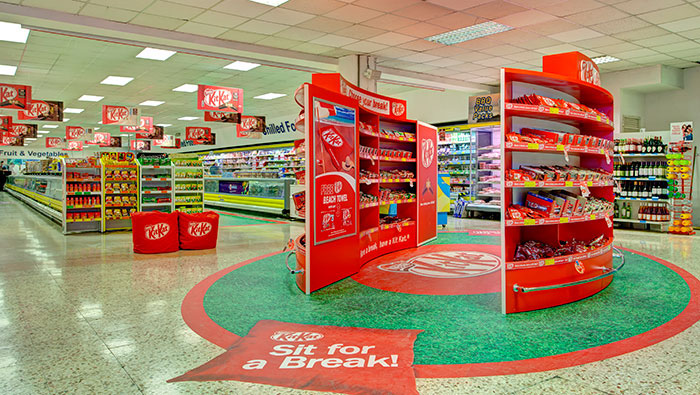
Accessibility: KitKat ensures its products are conveniently located within stores, often positioned near checkout counters to capitalize on impulse purchases.
Global Presence: KitKat is a global brand, available in over 100 countries. This extensive reach allows them to cater to a vast international audience.
4. Promotion
Advertising: KitKat utilizes various advertising channels to reach its target audience. This includes television commercials, online advertising, and social media marketing. Their ads are known for being lighthearted, relatable, and memorable, effectively conveying the brand’s message of taking a break and enjoying a KitKat.
Public Relations: KitKat cultivates positive brand image through public relations activities. Sponsorships of esports tournaments, events like My Voice Forum, and influencer partnerships generate positive brand association and reach new demographics.
Packaging Design: As discussed earlier, KitKat’s packaging itself acts as a powerful promotional tool. The bright red wrapper and the catchy tagline serve as constant visual reminders of the brand.
Experiential Marketing: KitKat occasionally engages in experiential marketing campaigns, creating interactive experiences for consumers. This allows for direct brand engagement and leaves a lasting impression.
By strategically implementing these 4Ps, KitKat has carved a unique niche in the chocolate bar market. Their product offering caters to diverse preferences, their pricing strategy ensures affordability, their widespread distribution makes them readily available, and their creative promotions effectively reach their target audience. This meticulous approach has cemented KitKat’s position as a beloved and globally recognized chocolate brand.
SWOT Analysis of KitKat
KitKat’s enduring success can be attributed to its capitalizing on its strengths, mitigating weaknesses, seizing opportunities, and addressing threats. Let’s dissect each element of its SWOT analysis for a clearer picture:
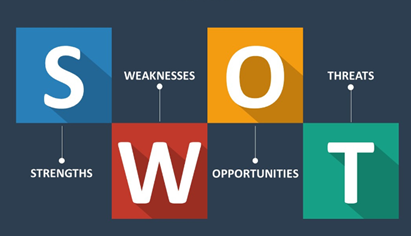
Strengths
Unique Offering: KitKat’s signature four-finger wafer coated in creamy chocolate creates a delightful textural contrast and a satisfying bite-sized indulgence. This unique format sets it apart from standard chocolate bars.
Nestlé Brand: As a product under the Nestle umbrella, KitKat benefits from brand recognition, trust, and global reach. Nestle’s reputation for quality control ensures consistent taste and experience.
Strong Tagline: “Have a break, have a KitKat” is a marketing triumph. It’s catchy, memorable, and perfectly captures the brand’s essence of offering a well-deserved break.
Distribution Network: KitKat boasts a vast and efficient distribution network, making it readily available in supermarkets, convenience stores, vending machines, and online retailers across over 100 countries.
Weaknesses
Duplication: While the unique wafer design is a strength, the chocolate coating itself isn’t vastly different from competitors. This can make it susceptible to generic store brand imitations, potentially confusing consumers and impacting sales.
Breakability: The chocolate-coated wafer design, while delicious, can be fragile and prone to breakage during transport or handling. This can be frustrating for consumers and lead to a negative perception of quality.
Packaging Appeal: While recognizable, KitKat’s packaging might be considered dated compared to flashier designs used by some competitors. Modernizing the packaging without losing brand identity could enhance its visual appeal.
Corporate Social Responsibility: KitKat, like its parent company Nestle, has faced criticism regarding its sourcing practices and potential use of child labor in the cocoa supply chain. Addressing these concerns and implementing transparent ethical sourcing practices is crucial.
Opportunities
Digital Marketing: Leveraging the power of social media and influencer marketing can create a strong online presence, connect with younger demographics, and promote KitKat’s brand message in engaging ways. User-generated content campaigns can further amplify brand reach.
Market Growth: The global chocolate market is projected to continue growing. KitKat can capitalize on this by expanding its presence in emerging markets and tailoring offerings to local preferences.
Healthy Snacking: Health-conscious consumers are a growing segment. KitKat can explore healthier alternatives like using dark chocolate, whole grains in the wafer, or introducing portion-controlled options to cater to this trend.
Threats
Health Awareness: The growing focus on health and wellness might lead consumers to opt for healthier snacks, potentially impacting KitKat’s sales of traditional chocolate bars.
Competition: The chocolate market is fiercely competitive, with established players like Cadbury and Hershey’s constantly innovating. KitKat needs to maintain its competitive edge through product diversification, strategic marketing, and staying abreast of consumer trends.
Supplier Bargaining Power: The cocoa and dairy industries are subject to price fluctuations. KitKat’s dependence on these raw materials makes it vulnerable to supplier bargaining power, potentially impacting profit margins. Negotiating long-term contracts and exploring alternative sourcing options can mitigate this risk.
Inflation: Rising inflation can increase production costs for KitKat’s ingredients and packaging. Maintaining profitability might require optimizing production processes, exploring cost-effective sourcing, or carefully considering price adjustments.
By continuously evaluating its strengths and weaknesses, and proactively addressing both opportunities and threats, KitKat can ensure its long-term success. Embracing innovation in product development, ethical sourcing practices, and digital marketing strategies will be key to maintaining its position as a global chocolate favorite.
Competitor Analysis of KitKat
KitKat reigns supreme in the chocolate market, but faces competition on multiple fronts. Here’s a detailed breakdown of KitKat’s competitor landscape:
Direct Competitors:
- Chocolate Bars: These are the most obvious rivals, offering similar chocolate bar experiences. Key players include:
- Cadbury Dairy Milk: The undisputed leader, Dairy Milk enjoys a loyal following and wider product range.
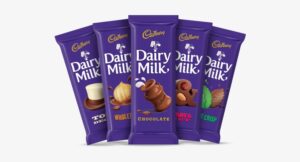
-
- Hershey’s: The American giant with its classic bar and variants like Reese’s Cups and Twix directly competes with KitKat on price and brand recognition.
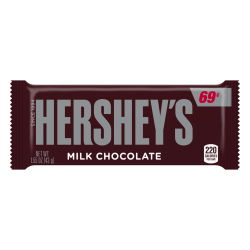
-
- Mars: Snickers, Mars bars, and Milky Way target similar demographics as KitKat, offering a mix of chocolate, caramel, and peanuts.
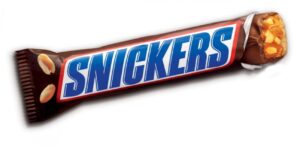
Indirect Competitors:
- Premium Chocolates: Brands like Lindt and Ghirardelli position themselves as more luxurious, targeting consumers seeking a higher-end chocolate experience.
- Chocolate Snacks: M&Ms, Twix, and bite-sized chocolates compete for on-the-go snacking needs, though they may not directly resemble a KitKat bar.
- Alternative Indulgences: Ice cream, cookies, and other sweet treats vie for a share of consumers’ dessert budgets.
Competitive Strategies:
- Product Differentiation: KitKat offers a variety of flavors and textures (KitKat Chunky) to cater to diverse preferences.
- Marketing and Branding: KitKat’s famous “Have a Break, Have a KitKat” slogan and playful imagery create a strong brand identity.
- Distribution Network: Nestle, KitKat’s parent company, boasts a vast global network, ensuring wide availability.
Challenges for KitKat:
- Rising Costs: Ingredients like cocoa and dairy are susceptible to price fluctuations, impacting KitKat’s affordability.
- Competition: The chocolate market is crowded, with new players and innovative products constantly emerging.
- Health Concerns: Consumers are increasingly health-conscious, and KitKat’s sugar content could be a deterrent for some.
By understanding the competitive landscape and adapting its strategies, KitKat can maintain its position as a global chocolate favorite.
Also Read: Satisfyingly Sweet: Snickers Flavors and Marketing Strategies
To read more content like this, subscribe to our newsletter



